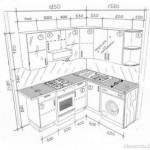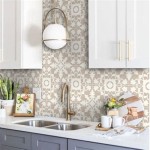Kitchen Cabinet Base Trim: Enhancing Form and Function
Kitchen cabinet base trim plays a crucial role in both the aesthetics and functionality of any kitchen. It serves multiple purposes, including concealing gaps between cabinets and the floor, protecting the cabinet base from damage, and adding a decorative touch that complements the overall design of the kitchen.
Types of Base Trim
There are various types of base trim available to suit different kitchen styles and cabinetry materials. Some of the most common types include:
Wood Base Trim: Wood trim is a classic choice that adds warmth and character to a kitchen. It is available in different wood species and finishes to match the cabinetry.
MDF Base Trim: Medium-density fiberboard (MDF) trim is a cost-effective option that offers a smooth, paintable surface. It is a good choice for kitchens with painted cabinets.
PVC Base Trim: Polyvinyl chloride (PVC) trim is a durable and moisture-resistant option that is easy to clean and maintain. It is suitable for kitchens that are prone to moisture or spills.
Tile Base Trim: Tile base trim creates a unique and decorative look. It is available in a wide range of colors, patterns, and finishes to complement any kitchen design.
Choosing the Right Base Trim
When selecting base trim for your kitchen, consider the following factors:
Kitchen Style: The style of your kitchen will influence the type of base trim that best complements it. Traditional kitchens may benefit from wood or tile trim, while modern kitchens may prefer sleek MDF or PVC trim.
Cabinetry Material: Choose base trim that matches the material of your cabinetry. For instance, if you have wood cabinets, consider wood or MDF trim. If you have laminate cabinets, PVC or tile trim may be a better choice.
Functionality: Consider the functionality of the base trim. If you have pets or small children, choose a durable and easy-to-clean material like PVC or tile. If you want a decorative accent, consider wood or tile trim.
Height: The height of the base trim should be proportional to the height of your cabinets and the overall size of the kitchen. Higher trim can visually elevate the cabinets and create a more dramatic effect.
Base Trim Installation
Installing base trim is a relatively straightforward process that requires basic carpentry skills. Here are the general steps involved:
Measure and Cut: Measure the length of the cabinet bases and cut the trim accordingly.
Apply Adhesive: Apply a bead of construction adhesive to the back of the trim.
Position and Secure: Position the trim carefully at the base of the cabinets and press firmly into place. Secure it with nails or screws.
Caulk and Finish: Fill any gaps between the trim and the floor or cabinets with caulk. Finish the trim by painting or staining it to match the cabinetry.
Benefits of Kitchen Cabinet Base Trim
In addition to its aesthetic appeal, kitchen cabinet base trim offers several benefits, including:
Protection: Base trim protects the cabinet base from moisture, spills, and damage caused by impacts or everyday wear and tear.
Concealment: It conceals any gaps between the cabinets and the floor, creating a finished and polished look.
Style Enhancement: Base trim can complement the overall design of the kitchen by adding texture, color, or pattern.
Increased Value: Well-installed base trim can increase the perceived value of a kitchen by enhancing its appearance and functionality.
Conclusion
Kitchen cabinet base trim is an essential element that combines both form and function. By choosing the right type of trim and installing it properly, you can enhance the aesthetic appeal of your kitchen, protect your cabinets, and create a cohesive interior design.

What Is Furniture Base Molding For Cabinets And How To Use It

Diy Kitchen Update Cabinet Trim Tutorial Domestic

How To Get A Custom Cabinet Look Using Trim Sincerely Marie Designs

10 Types Of Kitchen Cabinet Molding For Your Home

Do You Need Toe Kick Trim Or Molding In Your Kitchen

Adding Molding To Cabinets Make Them Look Built In Young House Love

How To Add Molding Cabinets For A Gorgeous Finish Inspiration Moms

I Like How The Front Has A Curved Trim At Base Kitchen Island Makeover Cabinets Cabinet Molding

7 Types Of Cabinet Moldings And How To Use Them Properly

Adding Moldings To Your Kitchen Cabinets Remodelando La Casa


















